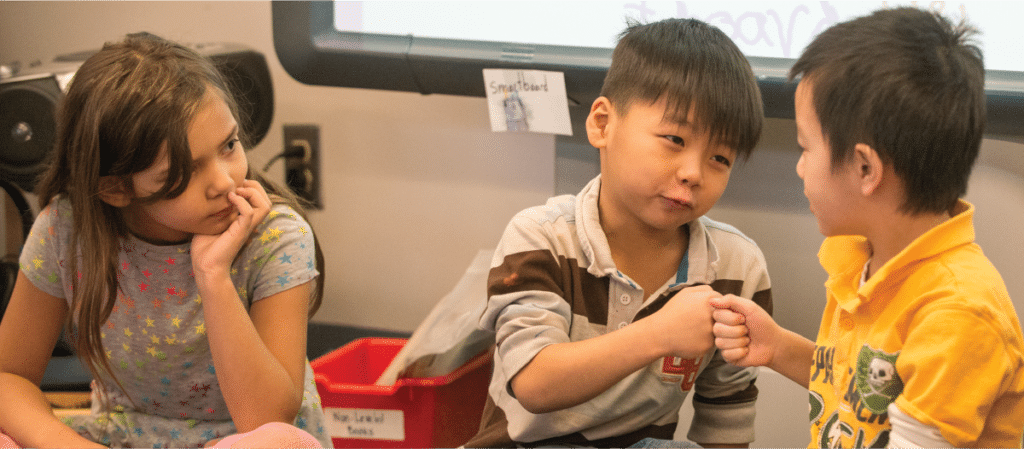
Following the busy first weeks of school, teachers and students begin to settle into a familiar rhythm. Students have learned important routines and class expectations and are getting excited about new opportunities to explore academic content. With familiarity building among students, you may begin noticing social groups or cliques starting to form. It is natural that children will find their connection with specific peers, but as teachers, what can we do to promote a positive community among all the students in our class?
Interactive learning structures are an effective way to deepen academic engagement while providing connection among your whole class. Because these structures offer students an opportunity to move around the classroom, reflect on their learning, and practice important speaking and listening skills, they are a powerful practice that can be used across grade levels and with any content area.
One of my favorite interactive learning structures—which I have used when teaching first and fifth grade—is Maître d’. (You can find the directions below.) During Maitre d’, students share their ideas with multiple classmates; this gives them the chance to practice sharing their thoughts, listening to others’ perspectives, and figuring out how to balance those two roles. You can vary group size during each round of this interactive learning structure, but I recommend starting out with groups of two to four.
Another interactive learning structure to try is Inside-Outside Circles. (The directions are also below.) Inside-Outside Circles is a fun way for students to pair up and converse with several partners in just a few minutes. The two concentric circles create opportunities for students to discuss a new topic each time they are paired with someone new in the opposite circle.
When I first started integrating interactive learning structures into my daily academic lessons and Morning Meetings, I noticed increased student engagement, improved behavior, an elevated sense of fun throughout the day. Yet beyond those benefits, I noticed something equally powerful. The hidden gem of interactive learning structures is that they strengthen the relationships in the classroom by promoting a positive community.
Early in an interactive learning structure, you will likely see students gravitate toward their closest friends. But as the rounds continue, students will naturally start connecting with all the members of the class. These brief, topic-focused interactions are a safe way for students to share ideas and gain new perspectives from their classmates. They may even find an unexpected bond or connection with someone new.
Read more about interactive learning structures by checking out Middle School Motivators! 22 Interactive Learning Structures. For additional information on open-ended questions, check out The Power of Our Words and The Power of Our Words for Middle School.
Alicia Cardina is a consulting teacher for Center for Responsive Schools.
“We’re going to form an inner and an outer circle to exchange ideas about how we might best use the new close reading strategies we just learned.”